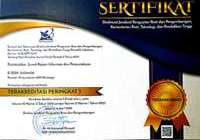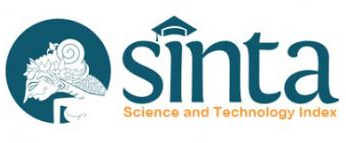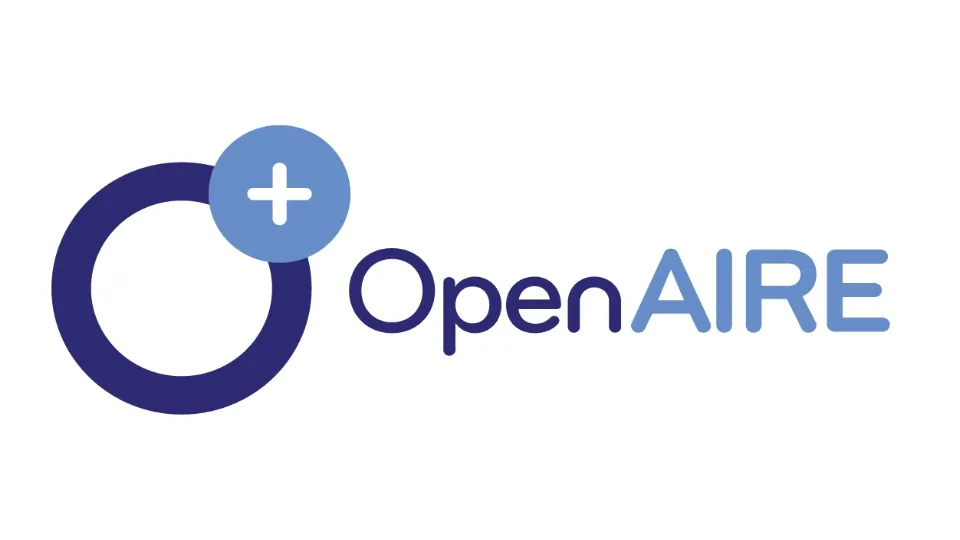Visualisasi Data Sebagai Layanan Perpustakaan dalam Membantu Pertumbuhan Ekonomi
DOI:
https://doi.org/10.21154/pustakaloka.v14i2.4354Keywords:
data visualization, library service, social inclusion, economic development, big dataAbstract
Data visualization is a series of data processing processes that produce information in a dynamic visual form. Many libraries around the world have embraced data visualization as a decision-making tool to assist them in making key decisions, but few have discussed the possibilities for libraries to employ this technology to help their users' economic growth. The closeness to life in the library, the opportunities for libraries as services based on social inclusion, as well as the challenges that arise for librarians are discussed in this article. The method used is a literature study of literature sources related to data visualization, business, libraries, and librarian competencies. The result is that the concept of data visualization resembles daily activities in the library, namely repackaging information and making statistics. Data visualization aids librarians in transforming data into actionable information for decision-making and serving it to users. Data visualization opens up opportunities for libraries to be used as services based on social inclusion to help the economic growth of their users. The challenge for librarians is the limited skillsets for this technology. To develop their skills, librarians are urged to enroll in education and training programs.References
Ali, Irhamni. “Big Data: Apa Dan Pengaruhnya Pada Perpustakaan? (What Is Big Data and Its Influence to Library).” Media Pustakawan 22, no. 4 (2015): 19”“23.
Asamoah, Daniel. “Improving Data Visualization Skills: A Curriculum Design.” International Journal of Education and Development Using Information and Communication Technology 18, no. 1 (2022): 213”“35.
Cooke, Nicole A. “Professional Development 2.0 for Librarians: Developing an Online Personal Learning Network (PLN).” Library Hi Tech News 29, no. 3 (April 27, 2012): 1”“9. https://doi.org/10.1108/07419051211241840.
Dankowski, Terra. “5 Library Jobs on the Rise: Emerging Roles and Titles Reflect Libraries’ Core Values.” American Libraries Magazine, June 1, 2022. https://americanlibrariesmagazine.org/2022/06/01/5-library-jobs-on-the-rise/.
Eaton, Mark. “Seeing Library Data: A Prototype Data Visualization Application for Librarians.” Journal of Web Librarianship 11, no. 1 (January 2, 2017): 69”“78. https://doi.org/10.1080/19322909.2016.1239236.
Koltay, Tibor. “Data Literacy for Researchers and Data Librarians.” Journal of Librarianship and Information Science 49, no. 1 (2017): 3”“14. https://doi.org/10.1177/0961000615616450.
Murphy, Sarah Anne. “Data Visualization and Rapid Analytics: Applying Tableau Desktop to Support Library Decision-Making.” Journal of Web Librarianship 7, no. 4 (October 2013): 465”“76. https://doi.org/10.1080/19322909.2013.825148.
Phetteplace, Eric. “Effectively Visualizing Library Data.” Reference & User Services Quarterly 52, no. 2 (December 1, 2012): 93”“97. https://doi.org/10.5860/rusq.52n2.93.
Raj, Raghavendra, Shun Ha Sylvia Wong, and Anthony J. Beaumont. “Business Intelligence Solution for an SME: A Case Study.” In Proceedings of the 8th International Joint Conference on Knowledge Discovery, Knowledge Engineering and Knowledge Management, 3:41”“50. SCITEPRESS - Science and Technology Publications, 2016. https://doi.org/10.5220/0006049500410050.
Raju, J. “Knowledge and Skills for the Digital Era Academic Library.” The Journal of Academic Librarianship 40, no. 2 (March 2014): 163”“70. https://doi.org/10.1016/j.acalib.2014.02.007.
Reinsel, David, John Gantz, and John Rydning. “Data Age 2025: The Evolution of Data to Life-Critical Don’t Focus on Big Data; Focus on the Data That’s Big.” IDC White Paper. International Data Corporation, 2017. https://www.import.io/wp-content/uploads/2017/04/Seagate-WP-DataAge2025-March-2017.pdf.
Roy, Loriene, and Dan Sholler. “What Reference Librarians Should Know about Data Science.” The Reference Librarian 60, no. 2 (April 3, 2019): 109”“16. https://doi.org/10.1080/02763877.2018.1560964.
TeÅ¡endić, Danijela, and Danijela Boberić Krstićev. “Business Intelligence in the Service of Libraries.” Information Technology and Libraries 38, no. 4 (2019): 98”“113. https://doi.org/10.6017/ital.v38i4.10599.
Tupan, Tupan, and Wahid Nashihuddin. “Kemas Ulang Informasi Untuk Pemenuhan Kebutuhan Informasi Usaha Kecil Menengah: Tinjauan Analisis di PDII-LIPI.” BACA: JURNAL DOKUMENTASI DAN INFORMASI 36, no. 2 (March 3, 2016): 109. https://doi.org/10.14203/j.baca.v36i2.206.
Tutunea, Mihaela Filofteia, and Rozalia Veronica Rus. “Business Intelligence Solutions for SME’s.” Procedia Economics and Finance 3, no. 12 (2012): 865”“70. https://doi.org/10.1016/S2212-5671(12)00242-0.
United Nations. “The Sustainable Development Goals Report 2021.” United Nations. United Nations, 2021. https://unstats.un.org/sdgs/report/2021/The-Sustainable-Development-Goals-Report-2021.pdf.
Utami, Dian, and Wahyu Deni Prasetyo. “Perpustakaan Berbasis Inklusi Sosial Untuk Pembangunan Sosial-Ekonomi Masyarakat.” VISI PUSTAKA 21, no. 1 (2019): 31”“37. https://doi.org/10.37014/visipustaka.v21i1.74.
Van Audenhove, Leo, Wendy Van den Broeck, and Ilse Mariën. “Data Literacy and Education: Introduction and the Challenges for Our Field,” 2020. https://doi.org/10.23860/JMLE-2020-12-3-1.
Womack, Ryan. “Data Visualization and Information Literacy.” IASSIST Quarterly 38, no. 1 (January 7, 2015): 12”“17. https://doi.org/10.29173/iq619.
Zakaria, Mahmoud Sherif. “Data Visualization as a Research Support Service in Academic Libraries: An Investigation of World-Class Universities.” The Journal of Academic Librarianship 47, no. 5 (September 2021): 102397. https://doi.org/10.1016/j.acalib.2021.102397.
Downloads
Published
Issue
Section
License
Requirements to be met by the author as follows:
- Author storing copyright and grant the journal right of first publication manuscripts simultaneously with licensed under the Creative Commons Attribution License that allows others to share the work with a statement of the work's authorship and initial publication in this journal.
Authors can enter into the preparation of additional contractual separately for non-exclusive distribution of a rich version of the journal issue (eg: post it to an institutional repository or publish it in a book), with the recognition of initial publication in this journal.
Authors are allowed and encouraged to post their work online (eg, in institutional repositories or on their website) prior to and during the submission process, because it can lead to productive exchanges, as well as citations earlier and more severe than published works. (see The Effect of Open Access).















